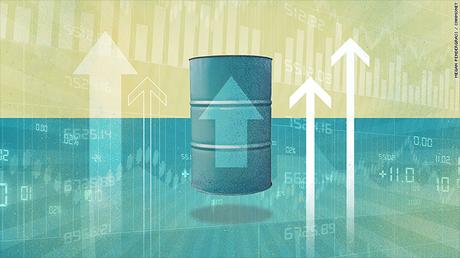It's a good day for OPEC.
Data released on Monday by the oil cartel shows that its members have largely complied with a production reduction agreement.
The confirmation closes a remarkable year for OPEC, which was forced to develop a price recovery plan after they fell to $ 26 per barrel in February 2016.
The collapse in prices - to levels not seen since 2003 - was caused by months of increasing excess supply, a slowdown in demand from China and a decision by the Western powers to lift Iran's nuclear sanctions.
Since then, the market has experienced a dramatic reversal, with crude prices doubling to trade at $ 53.50 a barrel.
Here's how the major oil producers worked together to drive up prices:
OPEC agreement
OPEC approved major production cuts in November, hoping to contain the world's excess oil supply and support prices.
The news of the deal immediately increased prices by 9%.
Investors cheered even more after several non-OPEC producers, including Russia, Mexico and Kazakhstan, joined the effort to restrict supply.
Above all, the agreement is blocked. The OPEC report released on Monday showed that its members have - for the most part - honored their commitments to reduce production. The International Energy Agency agrees: it estimated OPEC compliance for January at 90%.
UAE Energy Minister Suhail Al Mazrouei told CNNMoney on Monday that the results were even better than he expected.
Production reductions total 1.8 million barrels per day and are expected to last six months.
Related: OPEC Succeeded in One of Its " Deepest " Production Reductions

Optimistic investors
The OPEC agreement took months to negotiate and investors really appreciate it. The number of hedge funds and other institutional investors betting on higher prices hit a record high in January, according to OPEC.
Widespread optimism is helping to fuel price increases.
Higher demand
Latest OPEC and IEA data show that global demand for oil was higher than expected in 2016, thanks to stronger economic growth, higher vehicle sales and colder than expected weather conditions in the last quarter of the year.
Demand is expected to continue growing in 2017, reaching an average of 95.8 million barrels per day, compared to 94.6 million barrels per day in 2016.
The IEA said that if OPEC sticks to its agreement, the global glut of oil that has plagued the markets for three years will finally disappear in 2017.
Saudi oil minister: I don't sleep because of shale
And after?
Despite this meteoric growth, analysts warn that prices should not go much higher.
Indeed, the rise in oil prices should attract American shale producers to the market. The total number of active oil rigs in the United States was 591 last week, according to data from Baker Hughes. It is 152 more than a year ago.
US crude stocks rose in January to nearly 200 million barrels above their five-year average, according to the OPEC report.
"This sharp increase in stocks is the result of a strong supply response from American shale producers, who were not involved in the OPEC agreement and who instead used the resulting price rebound to increase the production, "said Fiona Cincotta, analyst at Cities Index.
An increased supply could again put pressure on OPEC.
